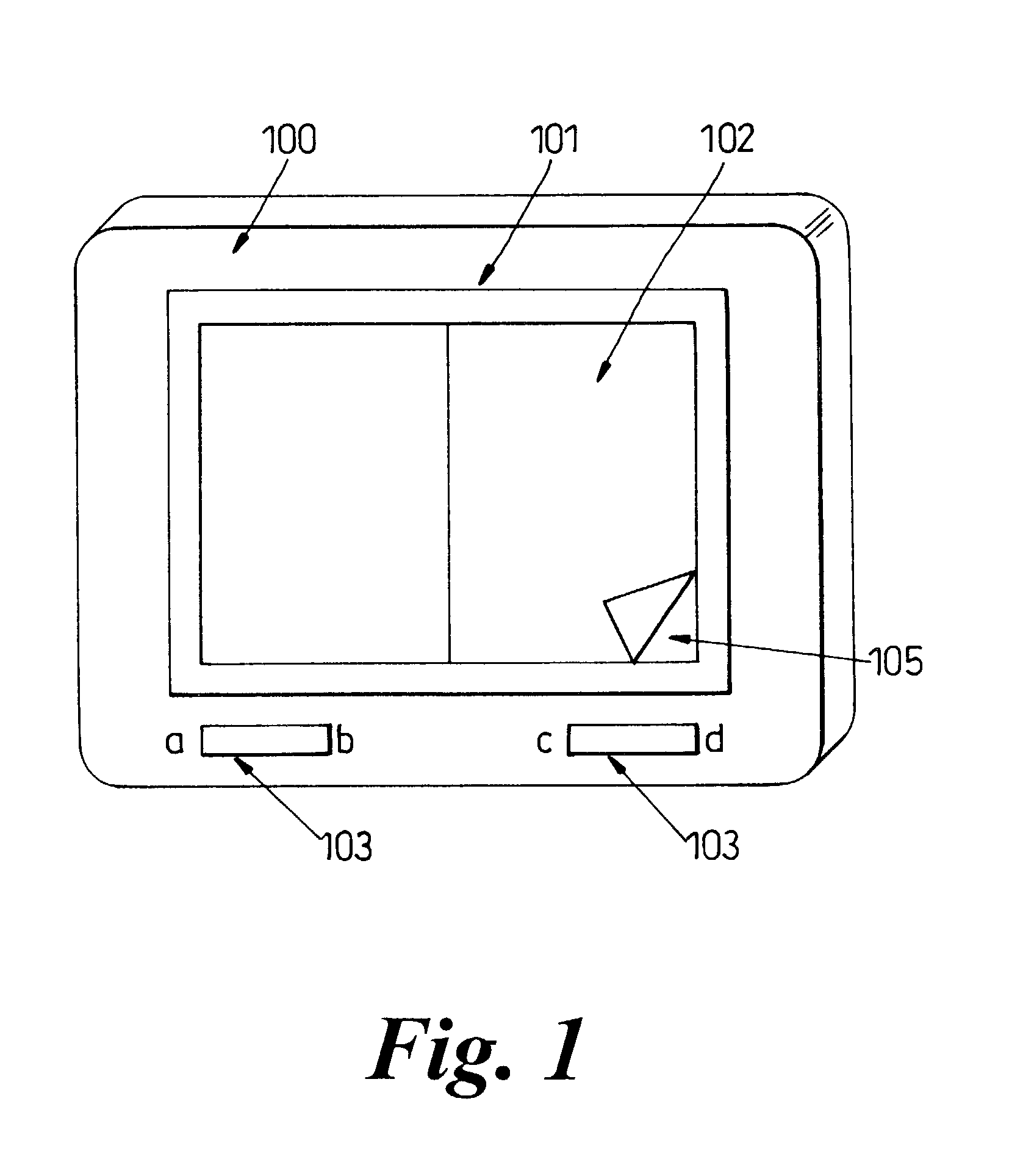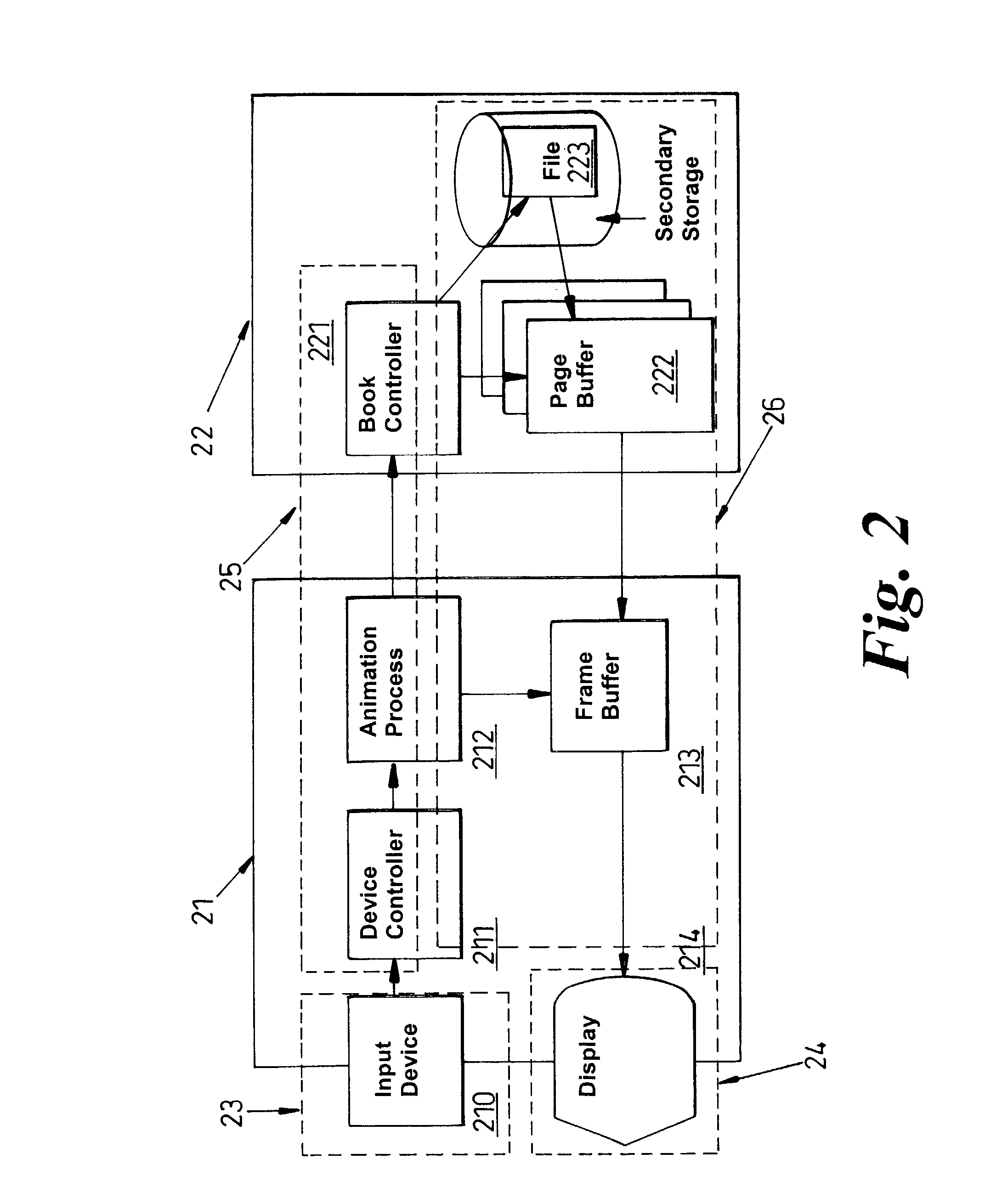Document viewing device
a document viewing and document technology, applied in the field of document viewing devices, can solve problems such as not being intuitive as may be desired, and achieve the effect of simple inputs to the device and the ability to compare an earlier pag
- Summary
- Abstract
- Description
- Claims
- Application Information
AI Technical Summary
Benefits of technology
Problems solved by technology
Method used
Image
Examples
example 2
[0085]This is illustrated in FIG. 8. The user touches the touchpad at A, moves it to B, and releases it. This motion, of “rubbing” or “stroking” the touchpad, is analogous to a motion that may be made by a user in turning the page of a physical book. In this case, the distance AB is greater than ATV, and page turning mode is entered—here, a single page is turned.
[0086]As can be seen from part (b), as distance AB is longer than the page turning threshold distance ATV, the input value rises proportionally, exceeding ATV, falling to 0 when the user releases at point B. As can be seen from part (c), the frame shown is proportional to V until frame AT is reached at distance ATV and time t1. From this point it is inevitable that at least one page will be turned—“Turning Forward” state 604 has been entered. Frames thus continue at a rate determined by the value of V up until the user input returns to 0 at t2. At this point frame OPT has not yet been reached (the page has not turned) and th...
example 3
[0087]FIG. 9 shows an example of the turning of multiple pages, as if a reader were “rifling” through a physical book.
[0088]The user touches the touchpad at point A, moves his finger to B (where distance AB exceeds ATV) and holds his finger at B for a period of time before releasing it (see parts (a) and (b)). The finger touches the touchpad at t1, moves until t3, and is then held at B until t8.
[0089]Part (c) shows the resulting frames for display. As for Example 2, the frame displayed is proportional to V until frame AT is reached at t1. After this point, the rate of page turning is proportional to (V−ATV). Once the first page is turned (at t2), the input state is still in the “Turn Forward” state and page turning continues. The rate of page turning is determined by V—as V is increasing up until the finger stops at B, at time t3, the rate of page turning increases until t3—it then remains constant, so the intervals between successive page turns after the next page turn at t4 (that ...
PUM
 Login to View More
Login to View More Abstract
Description
Claims
Application Information
 Login to View More
Login to View More - R&D
- Intellectual Property
- Life Sciences
- Materials
- Tech Scout
- Unparalleled Data Quality
- Higher Quality Content
- 60% Fewer Hallucinations
Browse by: Latest US Patents, China's latest patents, Technical Efficacy Thesaurus, Application Domain, Technology Topic, Popular Technical Reports.
© 2025 PatSnap. All rights reserved.Legal|Privacy policy|Modern Slavery Act Transparency Statement|Sitemap|About US| Contact US: help@patsnap.com



